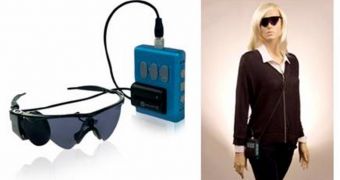The world just got its first bionic eye, say experts, commenting on the decision made in Europe to approve an artificial retinal prosthesis for commercial and clinical use. The milestone decision is reached after more than 20 years of investigations in this field.
This device is primarily intended to help people who lost their vision due to degenerative eye diseases. Starting now, these individuals will have the opportunity to buy a device that enables them to get their sight back to some extent.
But, beyond this actual implant, there is a brighter future in store for blind people. Now that the technology has reached the market, other companies are bound to improve on it even further.
As such, we could expect to see even more retinal implants making their way to the market in the coming years. An added benefit to this would be that competition among manufacturers would reduce the costs associated with purchasing a bionic eye.
In turn, this would make it easier for people who don't have so much money to regain their sight. “It marks the beginning of an era in which sight will be restored at ever more astonishing levels,” argues Robert Greenberg.
He is the president and CEO of California-based company Second Sight, the developer of the “eye.”
The approval of the Argus II device for general use will tremendously benefit retinitis pigmentosa patients, who number in the hundreds of thousands, explains Walter Wrobel. He is the CEO of Reutlingen, Germany-based company Retina Implant AG.
Right now, the Argus II has a retail price of about $115,000, and is available only in selected clinics in the United Kingdom, France and Switzerland. But Second Sight hopes to have the device approved by the Food and Drug Administration (FDA) for use in the United States by next year.
The device functions by capturing images from the outside world via a camera mounted on a pair of sunglasses. The data are sent wirelessly to a receptor implanted in the patient's retina.
The receptor features a set of electrodes, that are implanted in the optical nerves. They stimulate the retinal cells, producing optical signals. The reason why retinitis pigmentosa are the primary target of this is that only their light-sensing photoreceptors are damaged, whereas other cells are intact.
“Patients can locate and recognize simple objects, see people in front of them, and follow their movement. They can find doors and windows, follow lines, and in the best cases read large print slowly,” Greenberg says of Argus II's functionality.
“We have done something that many people would have thought and did think was impossible,” he adds, quoted by Technology Review. The company is now working on creating larger electrode arrays that will increase visual resolution even further.

 14 DAY TRIAL //
14 DAY TRIAL //